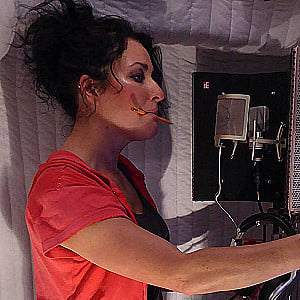IEEE TV Special - NeXOS. (Warm; Melodic; Informative; Soothing; British Accent; Narration.)
Description
Vocal Characteristics
Language
EnglishVoice Age
Middle Aged (35-54)Accents
British (General) British (Received Pronunciation - RP, BBC)Transcript
Note: Transcripts are generated using speech recognition software and may contain errors.
the bounty of the oceans has supported mankind for generations upon generations. But early sailors and fishermen only knew what they could see near the surface or from beneath it today way have a better understanding of just how plentiful and diverse sea life is. There are an estimated 10 billion tonnes of fish in the ocean from some 212,000 known marine species. Billions of microscopic creatures make up the base of this vast food chain, with ocean sustainability a major concern. Scientists and policymakers are less focused on discovering the ocean and more focused on observing and sustaining it. Nexus observations supporting ocean sustainability. The wealth of the nation lies not just in its creatures but also its energy and mineral reserves Is thie oceans. Business activities are estimated at 2.1 trillion euros per year, which would make it the fourth largest global economy. But there are from humans as well as through the changing environment. Nexus has developed next generation senses with small size and low power for fixed and mobile observing systems. One or more of these sensors can be deployed on undersea and surface level autonomous vehicles or on deep sea Observatory's human activities. Great noises in the oceans from ship's energy generation on other interactions and sound is an important part of the Marine Strategy Framework Directive or M S. F. D Falling under descriptor 11. Using a special signal processing board joined with state of the art hydrophones, this nexus acoustic sensor a one can detect and process a large spectrum of sounds from landslide rumbles. Two bio acoustics sources. A one has been demonstrated on a sea Explorer glider in Norway on a pro over profiling flute in the mid Atlantic on a tow fish installed on a surface wave glider Onda as part of the A to sensor in the Mediterranean. The Nexus A two is an acoustic network of precisely synchronised digital hydrophones. There is a central processor for real time localisation of sounds Theme A to shape is adaptable. Here it is configured as across with 10 metre arms on the hydrophones positioned at the ends. There are also M S F. D descriptors for chemical pollution and the oceans abundance of microscopic creatures. For these cases, Nexus developed a second type of sensor for observing light in the ocean. Fluorescence is one of the processes used by nexus to monitor the ocean. Fluorescence occurs when light stimulates materials to emit their own signature blue, green or red colour. So far, monitoring algae or Saddam with fluorescence has required multiple sensors. Nexus has reduced that need for long term operations. Bio fouling of optical sensors is a major issue. Nexus has a new solution for bio fouling. The applications for monitoring chemicals and microscopic algae are two examples of applications for fluorescents sensors. However, there are times when the density of contaminants is not high enough for these sensors to work for lower densities on alternative system from NEXUS uses an integrating cavity to increase sensitivity. These were demonstrated on a recent science cruise on the research vessel hanker. Monitoring the carbon cycle is another key challenge in addressing the sustainable development goals adopted by the United Nations. Nexus developed the sea bond to censor to gain a more comprehensive understanding of the oceans carbon chemistry. The sensor was fielded on a sale boy and also on the Hincker Research vessel to collect data pertinent to the changing climate. Monitoring fisheries is also a high priority, and it's two requires new senses. Nexus developed two of them one to monitor oxygen and the other for chlorophyll. Nexus E A. F sensors have been field tested with fishermen in Norway, France and Italy. You can see the sensor on the outer door of this fishing net system as part of the record pesca system. These sensors provide the environmental information needed to manage fish stocks. Chel Nedra, House of the Norwegian Institute of Marine Research, has been working with fishermen and boats for 40 years. He relates his experience for the fisheries system and other applications. It's crucial to have multiple sensors that can work together effectively. Nexus interoperable connects users to sensors and platforms. In addition, the Puck Protocol provides sensor information to the platform and the user. This capability is part of all of nexus sensors and users can work with any of the sensors in common formats. Nexus worked closely with its small enterprise partners to move toward production. With Nexus is introduction of this suite of lightweight, low power and fully interoperable senses. The time is now to transition from research operations
